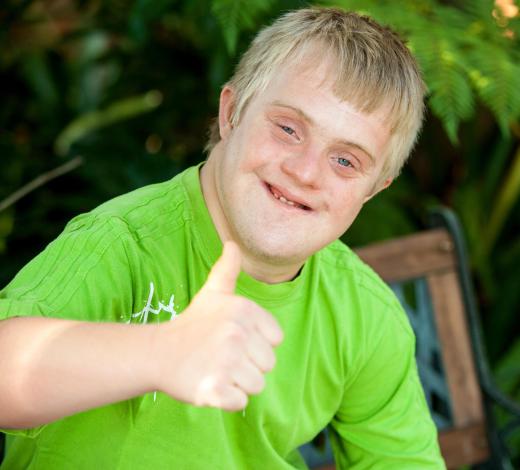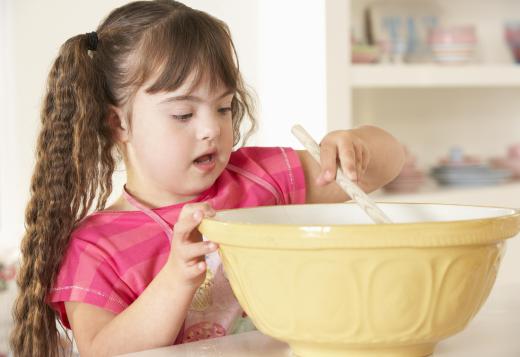What is a Karyotype?
 Mary McMahon
Mary McMahon
A karyotype is an image which depicts an organism's chromosomes. The term is also used to refer more generally to the complement of chromosomes found in a healthy representative of a species. Humans, for example, have 46 chromosomes in 23 pairs. Karyotypes can vary radically between species, and sometimes within a species, and researchers are constantly uncovering more information about them. Thanks to improvements in microscopy and scientific imaging, it is possible to generate very detailed, high quality karyotypes for study.
To generate an image of the chromosomes, a sample is taken, stained, and photographed, typically during during cell division when the chromosomes are highly visible. A geneticist arranges the chromosomes, matching up the pairs and organizing them in rows so that they can be clearly visualized. Depending on the type of staining and imaging used, varying levels of detail are visible. A karyotype can be made from the cell of an adult living organism, a child, or from cells taken from a developing fetus for the purpose of diagnostic testing.

When a geneticist reviews a karyotype, he or she evaluates the image to look for abnormalities. The shape, size, and number of chromosomes can all vary, and these variations can provide clues to a medical problem. For example, if a human karyotype reveals that a patient has three copies of the 21st chromosome, instead of two, the patient is diagnosed with Trisomy 21, also known as Down's Syndrome. Researchers can also compare the chromosomal banding in the patient to look for abnormalities and variations.

Some organisms demonstrate genetic mosaicism, in which the genetic material from cell to cell varies. For this reason, when a karyotype is prepared, the geneticist may use samples from several cells to determine whether or not a genetic variation is consistent across the body. The geneticist can also request additional testing on specific chromosomes to look for genetic material of interest or concern, such as genes which cause inherited diseases.

Karyotypes can be ordered for a variety of reasons. When people visit a genetic counselor to get information about genetic conditions, the counselor may obtain a karyotype as part of the assessment of the patient. Karyotypes are also used by researchers interested in various genetic conditions and in variations between species. Many people have seen a karyotype, although they may not have been aware of it, because karyotypes are often used to illustrate genetics textbooks and articles about genetic conditions.
AS FEATURED ON:
AS FEATURED ON:















Discussion Comments
@SailorJerry - I've been there! I had the nuchal translucency test and they didn't like the result, so I actually had CVS (chorionic villi sampling). CVS is done earlier than amnio, at about 10 or 12 weeks, but it's a similar basic idea. They actually take a small sample from the placenta. (It's a little more dangerous than amnio, but we have a history of chromosomal abnormalities in the family and we didn't want to wait.)
With both CVS and amniocentesis, they do a karyotype analysis to make sure everything is as it should be. Thankfully, my CVS showed exactly two of everything (including two Xs - baby girl!).
Here's hoping that your test also shows that nothing is wrong. It probably will!
My wife and I are expecting our first child and we've been scheduled for an amniocentesis based on some screening test results. (We're told that probably nothing is wrong, but that the screen means it is worthwhile to have the amnio.)
They explained to us that amnio is to detect chromosomal abnormalities. Does that mean that the person analyzing the fluid sample will make a karyotype of our baby's cells, and then look at the karyotype to see if everything is all right?
Post your comments